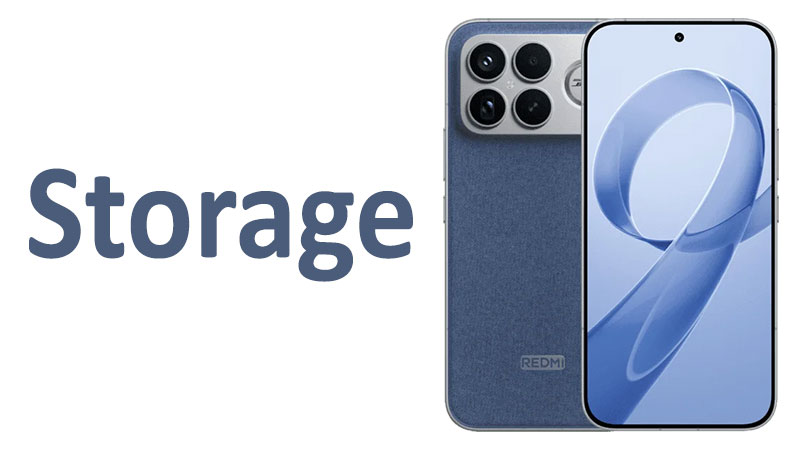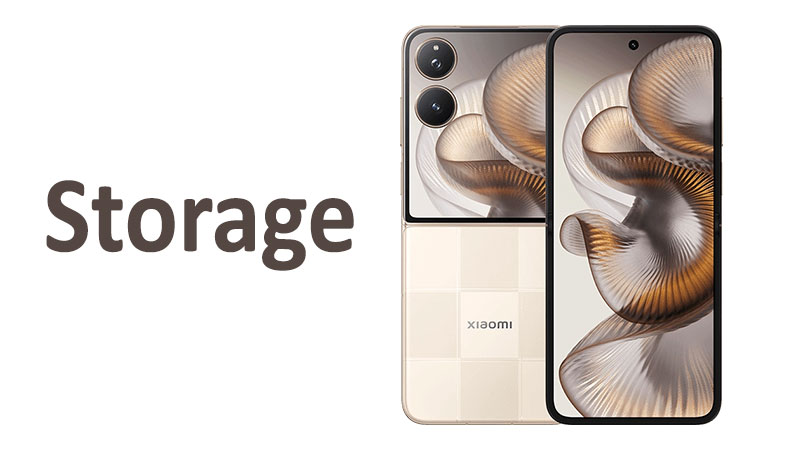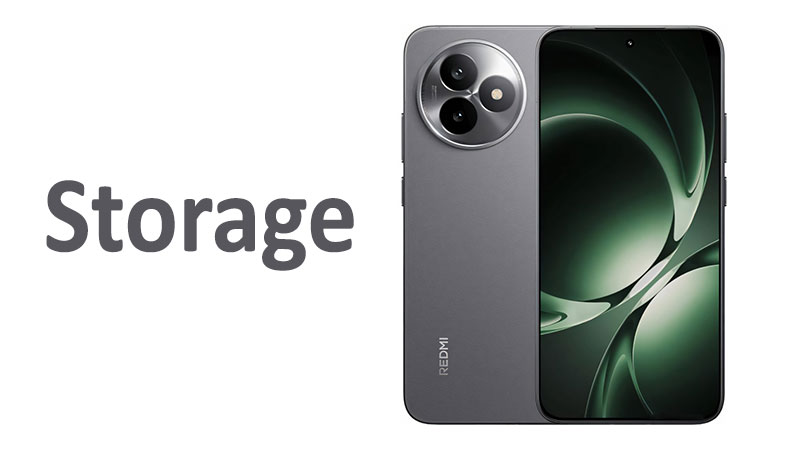The Xiaomi Redmi K90 Pro Max storage system represents a critical component of its flagship performance. Modern smartphones demand rapid access to massive amounts of data. This storage specification is often overlooked by consumers. However, it directly impacts application loading times and file transfer speeds. This article provides a comprehensive analysis of the Redmi K90 Pro Max’s memory and storage configuration. We will examine the capacity options and the crucial UFS 4.1 technology. Understanding these details helps buyers make the right configuration choice. This information is essential for maximizing your smartphone experience.
Understanding Xiaomi Redmi K90 Pro Max Storage Capacities
The Xiaomi Redmi K90 Pro Max storage offerings cater to a wide range of user demands. These premium tiers reflect the phone’s status as a high-end device. Buyers can select from three distinct tiers of internal storage. These options are 256GB, 512GB, and a massive 1TB. Each capacity tier is designed for a specific user profile. Choosing the right one is vital for long-term satisfaction.
The 256GB Base Model
The 256GB configuration serves as the entry point for this flagship phone. For many users, this capacity remains more than enough. It provides ample space for a large collection of applications. Users can store thousands of high-resolution photos. It accommodates hours of standard-definition video content. This option is ideal for the average user. It suits individuals who regularly use cloud services. They offload their data to services like Google Photos or other cloud backup platforms.
Specialized Comparison: Previous flagship generations often started at 128GB. The decision by Xiaomi to start the K90 Pro Max at 256GB is important. It reflects the increasing size of modern applications and system files. This elevated base capacity offers better value. It ensures a smoother transition for users upgrading from older devices. This eliminates initial storage concerns for most buyers.
The Mid-Range 512GB Option
The 512GB storage option provides a substantial upgrade in capacity. This tier is suited for the heavy-duty user and the mobile gamer. It offers double the space of the base model. This capacity is necessary for high-fidelity mobile games. Many modern game titles require over 10GB of installation space. Furthermore, this option is perfect for recording large amounts of 4K video. It allows users to store an entire media library locally. This capacity reduces reliance on external cloud connectivity.
This 512GB tier is popular among content creators. It provides the necessary buffer for working with video projects directly on the phone. This capacity is also useful for travelers. They often download movies and music for offline entertainment. The 512GB option represents the best balance between cost and storage longevity.
The Flagship 1TB Configuration
The 1TB storage option is reserved for the ultimate power user. This tier is essentially professional-grade memory within a smartphone. A 1TB capacity is nearly impossible for most casual users to fill. It is specifically aimed at serious photographers and videographers. This tier supports continuous 8K video recording. It handles the immense file sizes generated by ultra-high-resolution media. This configuration is future-proof. It allows the user to never worry about storage capacity again.
Buyer Consideration: The 1TB model usually carries a significant price premium. Buyers must assess whether the convenience justifies the added cost. This storage size is only truly necessary for professional mobile content creation. Most users will find 512GB more than sufficient for their needs. The 1TB option offers peace of mind for those unwilling to manage files.
UFS 4.1: The Technology Behind the Speed
The Xiaomi Redmi K90 Pro Max storage uses the advanced Universal Flash Storage (UFS) 4.1 standard. This technology is crucial for delivering a true flagship user experience. UFS 4.1 is the latest iteration of NAND flash storage. It provides immense speed advantages over previous generations. Understanding UFS 4.1 is key to appreciating the phone’s overall responsiveness.
UFS 4.1 Speed and Performance
UFS 4.1 offers significantly faster read and write speeds than its predecessors. It is twice as fast as the older UFS 3.1 standard. This rapid speed is immediately noticeable in daily use. Applications launch instantly, without delay. Large files transfer between the phone and a computer in seconds. The operating system feels incredibly responsive and fluid.
Sequential read speeds for UFS 4.1 can exceed 4,200 MB/s. Write speeds can surpass 2,800 MB/s. These figures are comparable to internal SSDs found in high-end laptops. This performance ensures that the powerful processor is never bottlenecked by slow storage access. The storage speed is essential for maintaining smooth gameplay in demanding 3D games. It also enables high-speed continuous shooting for the camera.
Specialized Comparison: UFS 4.1 vs. UFS 3.1
The leap from UFS 3.1 to UFS 4.1 is substantial in terms of real-world performance. UFS 3.1 typically offered sequential read speeds around 2,100 MB/s. UFS 4.1 effectively doubles this figure. This speed difference impacts file operations directly. For example, a 10GB game installation takes half the time on UFS 4.1 compared to UFS 3.1. Furthermore, UFS 4.1 is significantly more power-efficient. It uses less energy for the same amount of data transfer. This results in slightly better battery life during heavy use.
The Role of UFS 4.1 in Application Loading
The speed of the storage is particularly important for application performance. Every time an application launches, the phone reads data from the flash memory. Faster UFS 4.1 storage reduces the application loading time dramatically. This leads to a smoother, faster overall user experience. High-performance gaming also relies heavily on rapid texture loading. UFS 4.1 ensures that game assets load instantly, minimizing in-game stuttering. The seamless experience enhances the phone’s premium feel.
RAM and Storage Configuration Tiers Detailed
The Xiaomi Redmi K90 Pro Max storage is intricately linked with its RAM configurations. The system memory, or RAM, determines multitasking capability. The flash storage determines long-term data access speed. Xiaomi offers four distinct configurations. These configurations combine the storage capacity with the system memory.
256GB Storage with 12GB RAM
This is the standard entry-level configuration. It pairs a generous 256GB of storage with 12GB of RAM. The 12GB of RAM is more than sufficient for advanced multitasking. Users can keep dozens of applications running in the background. They can switch between apps instantaneously. This configuration is excellent for heavy social media users. It also handles moderate mobile gaming effectively. This tier offers the best value for money for most everyday users.
512GB Storage with 12GB RAM
This mid-tier configuration provides a significant bump in storage. It maintains the highly capable 12GB of RAM. The added 512GB of storage capacity addresses long-term media storage needs. This combination is ideal for users who download many large files. They may also install countless applications. They do not want to manage their local storage actively. The 12GB of RAM guarantees excellent performance. This is true even when juggling numerous demanding tasks simultaneously.
512GB Storage with 16GB RAM
This configuration is a dedicated performance upgrade. It is designed for the most demanding mobile users and enthusiasts. The 512GB of storage is paired with a massive 16GB of RAM. Sixteen gigabytes of RAM provides immense headroom for future software demands. It allows for the most extreme multitasking scenarios. This is critical for users who frequently switch between graphically intensive applications. It is also beneficial for mobile professionals running multiple heavy productivity apps. This pairing ensures absolute stability and responsiveness.
1TB Storage with 16GB RAM
This is the ultimate, top-tier configuration. It pairs the maximum 1TB of storage with 16GB of RAM. This option is exclusively for the professional content creator or the hardcore mobile gamer. It is aimed at users who record extensive 8K video footage. They also store massive game libraries. The combination of maximum capacity and maximum RAM guarantees unparalleled performance. It ensures the phone remains responsive under the heaviest load possible. This configuration is the definitive future-proof choice.
Performance and Specialized Benchmarks
Analyzing the raw numbers behind the Xiaomi Redmi K90 Pro Max storage helps illustrate its power. Benchmarking allows for an objective comparison of UFS 4.1 performance. These tests measure the speed at which data moves within the phone.
Sequential Read and Write Speeds
Sequential read speed measures how quickly the phone loads a single large file. This applies when opening a massive game or transferring a 4K movie. UFS 4.1 excels in this metric. It significantly reduces loading screens and transfer times. Sequential write speed measures how fast the phone saves a large file. This is crucial when recording high-resolution video. Fast write speeds prevent dropped frames during 8K video capture. The UFS 4.1 speed ensures the camera can capture data without interruption.
Random Read and Write Speeds
Random read and write speeds are arguably more important for daily use. This metric measures the speed of accessing many small, fragmented files. This is typical behavior when launching multiple apps or browsing the web. Fast random speeds make the operating system feel quick and smooth. The UFS 4.1 standard shows substantial improvements in random access. This directly translates to the phone’s overall perceived speed. This makes the day-to-day interactions feel snappier.
Specialized Comparison: Benchmarks Against Competitors
The UFS 4.1 storage in the Redmi K90 Pro Max competes directly with the fastest storage in the market. Its benchmark results consistently place it at the top of the performance charts. For instance, it provides a noticeable speed boost over flagship phones still using UFS 3.1. It even holds a slight edge over some competitors also using UFS 4.0 or UFS 4.1. This is due to Xiaomi’s optimization of the memory controller. The rapid storage is essential for competitive advantage in the premium segment.
Pros, Cons, and Key Buyer’s Guide
The Xiaomi Redmi K90 Pro Max storage system offers numerous advantages. However, it also presents a few typical trade-offs. A balanced review is essential for any potential buyer.
Advantages of the Storage System
The memory configuration provides several compelling benefits for the user. These pros justify the phone’s flagship positioning in the market.
- Cutting-Edge Speed: The UFS 4.1 technology delivers extremely fast read and write speeds. This dramatically reduces loading times for all applications.
- Generous Base Capacity: Starting at 256GB offers ample space for most modern users. It eliminates immediate storage worries.
- High-Capacity Options: The availability of 512GB and 1TB storage addresses the needs of professional content creators.
- Excellent Performance Pairing: The 12GB and 16GB RAM configurations ensure high-speed storage is never bottlenecked by insufficient system memory.
- Power Efficiency: UFS 4.1 is more energy-efficient than previous storage standards. This contributes positively to overall battery life.
Disadvantages of the Storage System
Despite its strengths, the phone’s storage configuration includes some typical limitations. Buyers must be aware of these constraints.
- No Expandable Storage: The Xiaomi Redmi K90 Pro Max does not support microSD cards. Users cannot easily add more storage capacity later.
- Price Premium for Top Tiers: The 1TB and 16GB RAM configuration commands a high price. The increased cost may not be justified for casual users.
- No 8GB RAM Option: The phone does not offer a lower-RAM option. While 12GB is great, a cheaper 8GB option could have lowered the entry price.
Important Points for Buyers
Making the right storage choice is a critical part of the purchasing decision. Since the storage is non-expandable, users must buy the correct amount initially. Here is a simplified buyer’s guide.
Assess Your Needs Carefully:
- 256GB (12GB RAM): Choose this if you use cloud storage regularly. This is also suitable if you primarily use social media and streaming services. It is the most cost-effective option.
- 512GB (12GB or 16GB RAM): Choose this if you are an avid mobile gamer. This is also ideal if you record 4K video occasionally. The 16GB RAM version provides the performance stability for heavy, long gaming sessions.
- 1TB (16GB RAM): Choose this if you are a professional videographer. This is necessary if you record 8K video daily. It is the only option if you absolutely refuse to manage your files.
RAM vs. Storage:
Remember the difference between RAM and storage. Storage capacity determines how many files you can keep. RAM determines how many applications you can run simultaneously. For the average user, the jump from 12GB to 16GB RAM is less important than the jump in storage from 256GB to 512GB. Prioritize storage capacity first.
Longevity and Future-Proofing:
The UFS 4.1 technology ensures the phone’s performance will remain rapid for several years. This memory type significantly extends the useful life of the device. Even if you choose the 256GB model, the speed remains a major factor in performance longevity.
The Technology of UFS 4.1 for Mobile Gaming
Mobile gaming places an enormous load on a smartphone’s storage system. The Xiaomi Redmi K90 Pro Max storage provides a significant advantage for gamers. The UFS 4.1 technology improves the gaming experience in several critical ways.
Faster Game Loading Times
The sequential read speed of UFS 4.1 drastically cuts down game loading screens. Loading a title like Genshin Impact or Call of Duty is much quicker. Gamers spend less time waiting and more time playing. This is a noticeable upgrade from previous-generation devices. This speed is especially appreciated when launching a game for the first time.
Improved Texture Streaming
Modern games use vast amounts of high-resolution textures. The phone streams these textures constantly from the storage to the GPU. Slow storage creates a bottleneck here. This causes micro-stutters or frame drops. UFS 4.1’s superior random read speeds eliminate this issue. Textures load instantly and seamlessly. This results in smoother, more consistent frame rates throughout the game.
Enhanced Caching and Game Updates
Game updates often involve downloading and installing large files. The rapid write speed of UFS 4.1 makes this process much quicker. Game caches and temporary files are also written and accessed faster. This ensures smoother background operations during active gameplay. The combination of high RAM and fast UFS 4.1 storage makes the Redmi K90 Pro Max a gaming powerhouse.
Conclusion
The Xiaomi Redmi K90 Pro Max storage is one of the phone’s most impressive technical features. The implementation of UFS 4.1 technology ensures exceptional speed and efficiency. This results in instant application loading and rapid file transfers. Furthermore, the capacity options are generous. They start at a spacious 256GB and scale up to an industry-leading 1TB. The configuration options are thoughtfully paired with 12GB or 16GB of RAM. This provides performance tailored to every user need.
Buyers should carefully assess their usage patterns before purchasing. The lack of expandable storage makes the initial capacity decision permanent. For most users, the 256GB or 512GB models offer the best value. Content creators and power users will benefit most from the 1TB/16GB top-tier configuration. The lightning-fast storage ensures the phone feels premium and remains future-proof. Choosing the right Xiaomi Redmi K90 Pro Max storage configuration guarantees long-term satisfaction and superior performance.
FAQ
Does the Xiaomi Redmi K90 Pro Max have expandable storage?
No, the Xiaomi Redmi K90 Pro Max does not feature a microSD card slot. It does not support expandable storage.
What storage technology does the Redmi K90 Pro Max use?
The phone uses the current-generation Universal Flash Storage (UFS) 4.1 standard. This provides extremely fast data read and write speeds.
What are the available storage capacity options?
The available storage capacities are 256GB, 512GB, and the maximum 1TB.
How much RAM is available in the top configuration?
The top configuration pairs 1TB of storage with a massive 16GB of LPDDR5X RAM.
How does UFS 4.1 benefit mobile gaming performance?
UFS 4.1 significantly reduces game loading times and improves the speed of texture streaming. This leads to much smoother and more consistent gameplay.



